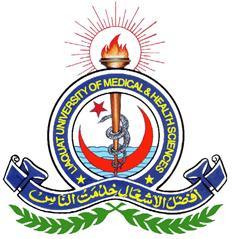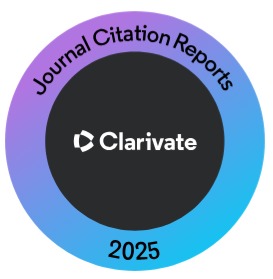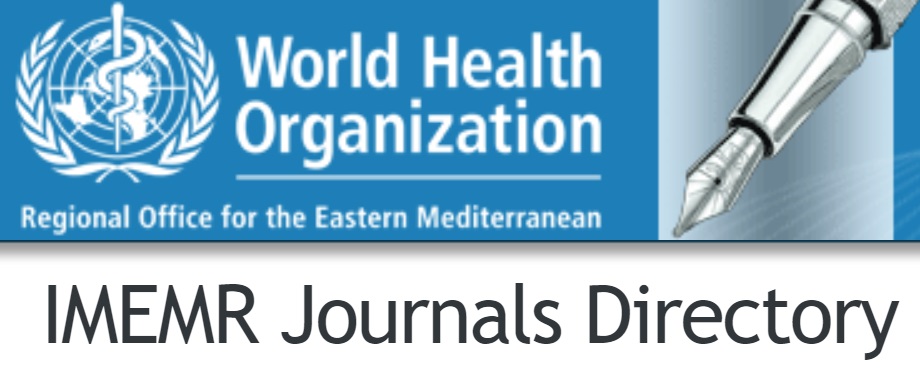First survey of epidemiology and associated risk factors of Human intestinal parasitic infections among Gonabad residents, northeast of Iran
Keywords:
Intestinal parasites, helminth, Prevalence, Iran, protozoanAbstract
OBJECTIVE: To investigate the prevalence of parasitic infections in the human population and identify the related risk factors of Gonabad city, southeast of Khorasan Razavi province, northeastern Iran.
METHODOLOGY: This cross-sectional study was performed from March to April 2019 in Gonabad city in Khorasan Razavi province in northeastern Iran. One thousand thirty-eight stool samples were examined using parasitological methods like direct wet-mounting, formalin-ether concentration and Gomori's trichrome staining. Moreover, the socio-demographic data of inhabitants were recorded. All statistical analyses were performed using SPSS software (version 16). Qualitative variables were reported as numbers and percentages.
RESULTS: The overall intestinal parasitic infection prevalence was 18.1 %, whereas this value for protozoan agents was 16.7% (95% CI 14.14 to 19) and 1.3% (95% CI 0.7 to 2) for helminth parasites. The highest parasitic agent prevalence belongs to Blastocystis sp (12.4 %), Entamoeba coli (1.8%) and Enterobius vermicularis (1.2%), respectively. Giardia lamblia (1.1%) Entamoeba histolytica /dispar (0.3%), Iodamoeba butschlii (0.3%), Chilomastix mesnili (0.3%), Hymenolepis nana (0.2 %) Dientamoeba fragilis (0.2%) and Trichomonas hominis (0.3%) were other identified parasites. Multivariate logistic regression analysis revealed a significant association of parasitic intestinal infections with factors such as age, residency status and source of drinking water (P<0.05).
CONCLUSION: Our findings approved that the protozoan agents have a relatively high prevalence among the studied population. So, it could be severe enough to alarm the entities implementing healthcare services measures for parasitic intestinal infection control.
References
Afshar MJ, Barkhori Mehni MB, Rezaeian M, Mohebali M, Baigi V, Amiri S et al. Prevalence and associated risk factors of human intestinal parasitic infections: A population-based study in the southeast of Kerman province, southeastern Iran. BMC Infect Dis. 2020; 20(1): 12. doi: 10.1186/s12879-019-4730-8.
Arani AS, Alaghehbandan R, Akhlaghi L, Shahi M, Lari AR. Prevalence of intestinal parasites in a population in south of Tehran, Iran. Rev Inst Med Trop Sao Paulo. 2008; 50(3): 145-9. doi: 10.1590/S0036-46652008000 300003.
Badparva E, Kheirandish F, Ebrahimzade F. Prevalence of intestinal parasites in Lorestan Province, West of Iran. Asian Pacific J Trop Dis. 2014; 4(2): S728–S732. doi: 10.1016/ S2222-1808(14)60716-7.
Bahrami F, Haghighi A, Zamini G, Khadem-Erfan MB, Azargashb, E. Prevalence and associated risk factors of intestinal parasitic infections in Kurdistan province, Northwest Iran. Cogent Med. 2018; 5(1): 1503777. doi: 10.1080/2331205x.2018.1503777.
Kuzehkanani AB, Rezaei S, Babaei Z, Niyyati M, Hashemi SN, Rezaeian M. Enteric protozoan parasites in rural areas of Bandar-Abbas, southern Iran: Comparison of past and present situation. Iran J Public Health. 2011; 40(1): 80-85.
Bakarman MA, Hegazi MA, Butt NS. Prevalence, characteristics, risk factors, and impact of intestinal parasitic infections on school children in Jeddah, western Saudi Arabia. J Epidemiol Glob Health. 2019; 9(1): 81-87. doi: 10.2991/jegh.k.190219.001.
Boonjaraspinyo S, Boonmars T, Kaewsamut B, Ekobol N, Laummaunwai P, Aukkanimart R et al. A cross-sectional study on intestinal parasitic infections in rural communities, northeast Thailand. Korean J Parasitol. 2013; 51(6): 727-34. doi: 10.3347/kjp.2013.51.6.727.
Calderaro A, Montecchini S, Rossi S, Gorrini C, De Conto F, Medici MC et al. Intestinal parasitoses in a tertiary-care hospital located in a non-endemic setting during 2006-2010. BMC Infect Dis. 2014; 14: 264. doi: 10.1186/1471-2334-14-264.
Elmonir W, Elaadli H, Amer A, El-Sharkawy H, Bessat M, Mahmoud SF et al. Prevalence of intestinal parasitic infections and their associated risk factors among preschool and school children in Egypt. PLoS ONE. 2021; 16(9): e0258037. doi: 10.1371/journal.pone.0258037.
Faridi A, Kareshk AT, Sadooghian S, Firouzeh N. Frequency of different genotypes of Giardia duodenalis in slaughtered sheep and goat in east of Iran. J Parasit Dis. 2020; 44(3): 618-624. doi: 10.1007/s12639-020-01237-1.
Fauziah N, Aviani JK, Agrianfanny YN, Fatimah SN. Intestinal parasitic infection and nutritional status in children under five years old: a systematic review. Trop Med Infect Dis. 2022; 7(11): 371. doi: 10.3390/tropicalmed7110371.
Girma A, Aemiro A. Prevalence and Associated Risk Factors of Intestinal Parasites and Enteric Bacterial Infections among Selected Region Food Handlers of Ethiopia during 2014–2022: A Systematic Review and Meta-Analysis. Scientif World J. 2022; 2022: 7786036. Doi: 10.1155/2022/7786036.
Hajissa K, Islam MA, Sanyang AM, Mohamed Z. Prevalence of intestinal protozoan parasites among school children in Africa: A systematic review and meta-analysis. PLoS Negl Trop Dis. 2022; 16(2): e0009971. doi: 10.1371/journal.pntd.0009971.
Hemmati N, Razmjou E, Hashemi-Hafshejani S, Motevalian A, Akhlaghi L, Meamar AR. Prevalence and risk factors of human intestinal parasites in Roudehen, Tehran province, Iran. Iran J Parasitol. 2017; 12(3): 364-373.
Jafari R, Fallah M, Darani HY, Yousefi HA, Mohaghegh MA, Latifi M et al. Prevalence of Intestinal Parasitic Infections Among Rural Inhabitants of Hamadan City, Iran, 2012. Avicenna J Clin Microbiol Infect. 2014; 1(2): 21445. doi: 10.17795/ajcmi-21445.
Kia EB, Hosseini M, Nilforoushan MR, Meamar AR, Rezaeian M. Study of intestinal protozoan parasites in rural inhabitants of Mazandaran Province, northern Iran. Iran J Parasitol. 2008; 3(1): 21-25.
Mahmoudvand H, Badparva E, Khalaf AK, Niazi M, Khatami M, Nazer MR. Prevalence and associated risk factors of intestinal helminthic infections in children from Lorestan province, Western Iran. Parasite Epidemiol Control. 2020; 9: e00136. doi: 10.1016/j.parepi.2020. e00136.
Mahni MB, Rezaeian M, Kia EB, Raeisi A, Khanaliha K, Tarighi F et al. Prevalence of intestinal parasitic infections in Jiroft, Kerman Province, Iran. Iran J Parasitol. 2016; 11(2): 232-238.
Mowlavi GR, Mirahmadi H, Rezaeian M, Kia E, EbrahimiDaryani N, Rokni MB et al. Prevalence of intestinal parasites in tribal parts of Khuzestan Province during 2005-07. Govaresh. 2008; 12(4): 219-228.
Ngwese MM, Manouana GP, Moure PAN, Ramharter M, Esen M, Adégnika AA. Diagnostic techniques of soil-transmitted helminths: Impact on control measures. Trop Med Infect Dis. 2020; 5(2): 93. doi: 10.3390/tropicalmed5020093.
Niyyati M, Rezaeian M, Zahabion F, Hajarzadeh R, Kia EB. A survey on intestinal parasitic infections in patients referred to a hospital in Tehran. Pak J Med Sci. 2009; 25(1): 87-90.
Pestehchian N, Nazari M, Haghighi A, Salehi M, Yosefi H, Khosravi N. Prevalence of intestinal parasitic infection among inhabitants and tribes of Chelgerd, Iran, 2008-2009. J Clin Diagn Res. 2015; 9(5): LC01-LC04. doi: 10.7860/JCDR/2015/11580. 5879.
Qasemi M, Afsharnia M, Farhang M, Bakhshizadeh A, Allahdadi M, Zarei A. Health risk assessment of nitrate exposure in groundwater of rural areas of Gonabad and Bajestan, Iran. Environ Earth Sci. 2018; 77: 551. doi: 10.1007/s12665-018-7732-8.
Rasti S, Hassanzadeh M, Hooshyar H, Momen-Heravi M, Mousavi SGA, Abdoli A. Intestinal parasitic infections in different groups of immunocompromised patients in Kashan and Qom cities, central Iran. Scand J Gastroenterol. 2017; 52(6-7): 738-741. doi: 10.1080/00365521.2017.1308547.
Rokni MB. The present status of human helminthic diseases in Iran. Ann Trop Med Parasitol. 2008; 102(4): 283-95. doi; 10.1179/136485908X300805.
Saki J, Amraee D. Prevalence of Intestinal Parasites Among the Rural Primary School Students in the West of Ahvaz County, Iran, 2015. Jentashapir J Health Res. 2017; 8(1): e40326. Doi: 10.5812/jjhr.40326.
Sarkari B, Hosseini G, Motazedian MH, Fararouei M, Moshfe A. Prevalence and risk factors of intestinal protozoan infections: A population-based study in rural areas of Boyer-Ahmad district, Southwestern Iran. BMC Infect Dis. 2016; 16(1): 703. doi: 10.1186/s12879-016-2047-4.
Shahdoust S, Niyyati M, Haghighi A, Azargashb E, Khataminejad MR. Prevalence of intestinal parasites in referred individuals to the medical centers of Tonekabon city, Mazandaran province. Gastroenterol Hepatol Bed Bench. 2016; 9(Suppl1): S75-S79.
Sitotaw B, Shiferaw W. Prevalence of Intestinal Parasitic Infections and Associated Risk Factors among the First-Cycle Primary Schoolchildren in Sasiga District, Southwest Ethiopia. J Parasitol Res. 2020; 2020: 8681247. doi: 10.1155/2020/8681247.
Symeonidou I, Tassis P, Gelasakis AI, Tzika ED, Papadopoulos E. Prevalence and risk factors of intestinal parasite infections in Greek swine farrow-to-finish farms. Pathogens. 2020; 9(7): 556. doi: 10.3390/pathogens9070556.
Taherkhani K, Barikani A, Shahnazi M, Saraei M. Prevalence of intestinal parasites among rural residents of Takestan in north-west of Iran. Iran J Parasitol. 2019; 14(4): 657-663. doi: 10.18502/ijpa.v14i4.2118.
Tsegaye B, Yoseph A, Beyene H. Prevalence and factors associated with intestinal parasites among children of age 6 to 59 months in, Boricha district, South Ethiopia, in 2018. BMC Pediatr. 2020; 20(1): 28. doi: 10.1186/s12887-020-1935-3.
Downloads
Published
How to Cite
Issue
Section
License
Copyright (c) 2024 Journal of Liaquat University of Medical & Health Sciences

This work is licensed under a Creative Commons Attribution-NonCommercial-ShareAlike 4.0 International License.
Submission of a manuscript to the journal implies that all authors have read and agreed to the content of the undertaking form or the Terms and Conditions.
When an article is accepted for publication, the author(s) retain the copyright and are required to grant the publisher the right of first publication and other non-exclusive publishing rights to JLUMHS.
Articles published in the Journal of Liaquat University of Medical & health sciences are open access articles under a Creative Commons Attribution-Noncommercial - Share Alike 4.0 License. This license permits use, distribution and reproduction in any medium; provided the original work is properly cited and initial publication in this journal. This is in accordance with the BOAI definition of open access. In addition to that users are allowed to remix, tweak and build upon the work non-commercially as long as appropriate credit is given and the new creations are licensed under the identical terms. Or, in certain cases it can be stated that all articles and content there in are published under creative commons license unless stated otherwise.























